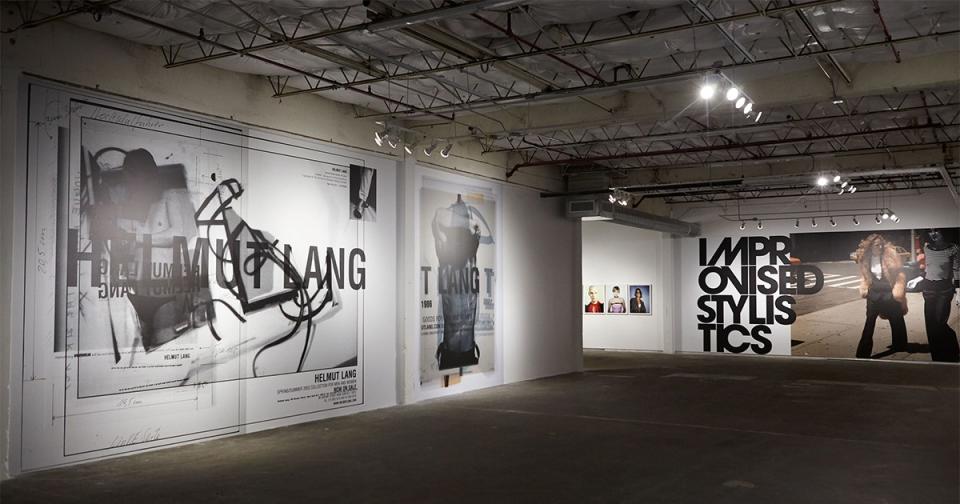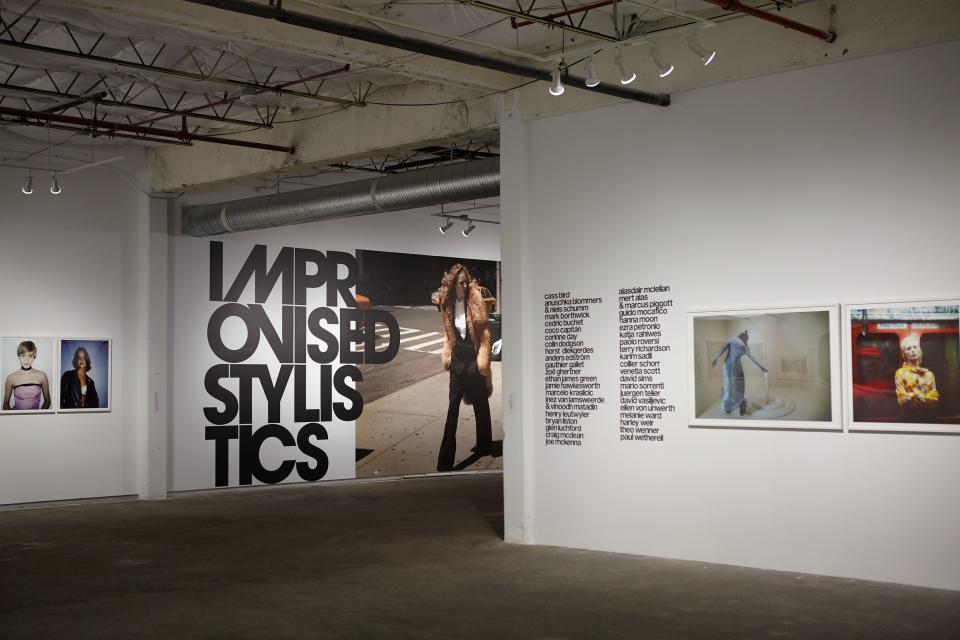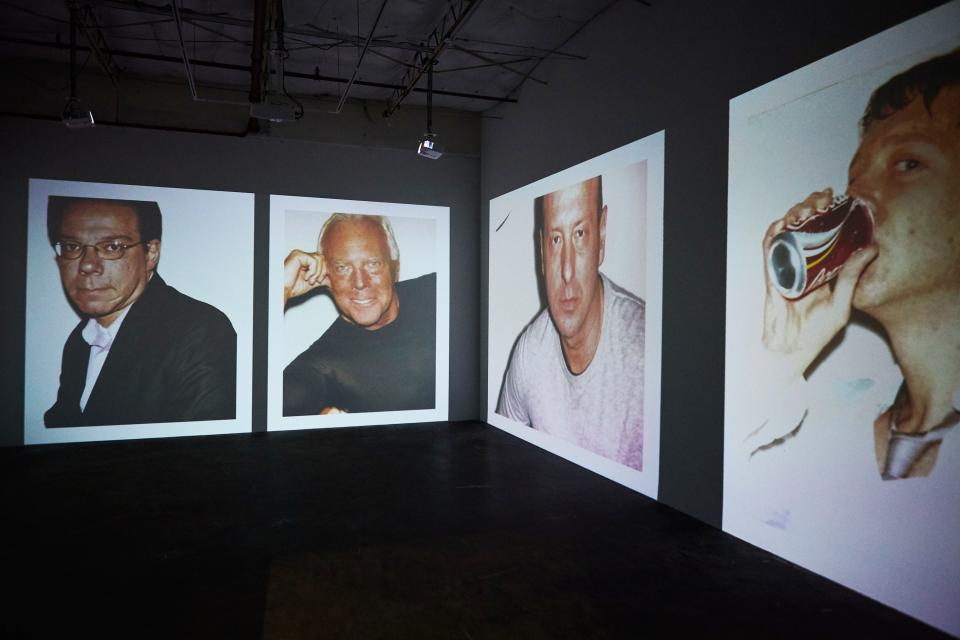Self Service Celebrates Its 25th Anniversary With An Exhibition At Dallas Contemporary
Ezra Petronio, the cofounder of the biannual magazine Self Service, is on the phone from Dallas, despite feeling just a little bit delicate. It’s not jet lag (he’s based in Paris) or a heavy night before that’s the cause, but a BBQ dinner the previous evening. Yet his current state could also be down to the mammoth task of installing an exhibition at the Dallas Contemporary space which is dedicated to the twenty-fifth anniversary of the magazine.
Self Service Twenty Five Years of Fashion, People and Ideas Reconsidered, which opens April 13th, is a show that’s as bold, dynamic and as visually compelling as the publication itself. It’s a trippy mega blown up ride through its sterling list of collaborators—Inez and Vinoodh, Juergen Teller, Helmut Lang, et al—juxtaposed against Petronio’s art direction, not to mention his many, many Polaroids of people who work in every aspect of the industry. Self Service was really the first publication to throw the spotlight on to those behind the scenes, simultaneously celebrating and demystifying fashion culture.
If the show has a terrific restlessness to it, that’s likely intentional; Petronio would be the first to agree that magazine-making is a collaborative action where everyone's pushing on to the future. And it’s also, for all his own engagement with the technological advances of digital, an unabashed love letter to the beauty of print.
Ezra, how did the exhibition come about?
I had already had an exhibition of my Polaroids at Dallas Contemporary in 2012. [Executive Director] Peter Doroshenko has always been very supportive of fashion; there have been shows from Juergen Teller, Jeremy Scott, Inez and Vinoodh, and Mario Sorrenti— and a show of Mario’s early pictures of Kate Moss is going to open the same day as ours. [Dallas] is a progressive and liberal city, one that’s quite active in terms of fashion and lifestyle. Peter had wanted me to curate a show on something else, but then I told him Self Service had an anniversary coming up, so that became the basis of the show.
Can you give me some details on what’s in it, and how it will be presented in the space?
The idea is to show people the life of a magazine, and its place in pop culture. We broke the show down into different parts. There’s a monumental wall of collages, layouts, unpublished images, flatplans [the map of an issue] match prints [test images so the published pictures match the actual images]...they give a little essence of what the magazine is. We have a 70 metre long wall of images, typographies, wallpapers. There's a big black box with a video installation of seven projections of my Polaroids, so you can be immersed in who we’ve shot—the designers, the artists, and the curators, everyone that defines the cultural landscape around fashion. We are also featuring 30 to 35 photographers and stylists, mostly their personally iconic pictures as art prints, from Mert and Marcus, Juergen [Teller], Inez and Vinoodh, Jane How, Joe McKenna. And Helmut Lang redid some of his old ads…voila!

I like the way you’ve really thought about making the seeing the show similar to the experience of reading the magazine; despite the blown up scale of so much of the imagery, it feels like an incredibly intimate experience.
Being immersive was key. [The exhibition] is very pop in a way. You can feel the energy and accumulation of collective work—the recognition of everything that everyone did, so there’s a nice celebration of people’s contributions to the magazine. It’s always a collective effort, and to be able to celebrate generations old and new is very nice. Also, the idea of transmission; of showing something that is going to being able to be understood by the outside world. Not everyone knows much about fashion or what it takes to create a magazine—and all the changes that have happened in our industry in the last 25 years. You see that through our eyes, as we want to transmit this body of work as a social documentation of the times. And we wanted to celebrate the creative dynamics and intellectual process of image making.
Which moments stand out for you, now you’ve had this chance to review Self Service’s history?
There are definitely certain moments that I really enjoy, beyond the nostalgia of the early ‘90s [when Self Service started] and we had no money and we were just doing it for the love of doing it, just hanging out with Mark Borthwick and taking pictures. There are the early days of Inez and Vinoodh, all the lengthy portfolios we did with photographers, whenever we had a guest editor, like Jane How or Juergen Teller or Joe McKenna….

And I know everyone hates this kind of question—I’m sorry!—but is there still one particular story that you keep going back to?
It would be one of the big stories that Inez and Vinoodh and Suzanne [Koller, the stylist and co-founder of Self Service] did. It represents experimental graphics, strong characters, strong women…. We shot it in [hairdresser] Christiaan’s apartment and it still looks experimental and chic.
In the twenty five years you’ve done Self Service we’ve seen the industry transformed by digital technology. Does your experience of today make you look at the work of the past differently?
It’s funny. As I am talking to you, what I find quite striking is that a good picture is memorable because it is of the moment and it’s also timeless—it manages to stand the test of time; you see that when you’re looking at an image by someone like Mark [Borthwick]. The thing with fashion photography....these are images which we set up, by a group of people who’ve come together to create the best story they can, and there’s still a relevance to that today, which is encouraging when it can feel like mediocrity is the new norm. It’s great when someone like Harley Weir or Mert and Marcus email you after the new issue comes out, and they say it looks strong, and it only makes them want to create stronger images; you’re helping enable someone’s self expression.
Tell me about the Polaroid images you’ve included in the show. I love that they’re so Pop in a way, a very Warholian idea of portraiture, but also they do underscore how much you were absolutely there first in documenting all the people behind the scenes, something that’s become more commonplace in the last few years.
When I look at the Polaroid prints I can see that everyone has their own ideology, they all have this drive to do something that has meaning, and not to sound negative, but that’s really important today when it can seem like everyone’s ready to just give up. I am still of the belief that fashion can lead us forward; it can shape society, not just mirror it.



